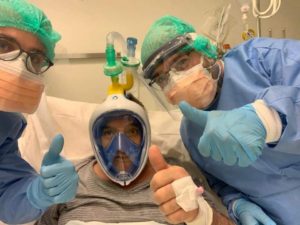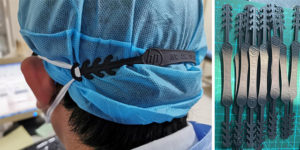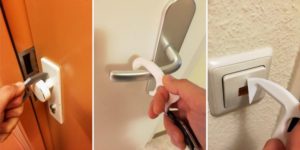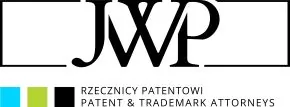Nature, especially in spring, may be an inspiration for a creative work. This year, however, the world is ruled by different laws which push it to search for solutions which are not obvious.
Usually the majority of innovations arise as a result of conducting a laborious research which means hundreds of hours spent in the laboratory. Unexpectedly, due to the epidemic of COVID 19, there is an urgent need for finding new ideas to deal with the emerging problems, for example there are attempts to remedy limited availability of equipment by applying completely innovative ideas.
The incremental technologies, known for over 20 years, i.e. 3D printing, have been rediscovered recently. The availability and falling price of 3D printers have contributed to the increased popularity of this manufacturing technique. One of the most popular and cheapest printing technologies is FDM i.e. applying molten thermoplastic material layer by layer. Usually FDM technology is used for making one-off models, prototypes and small series of a product, when using the traditional methods of manufacture is unprofitable. Additive technologies not only allow the production of spatially complex forms, but also the time of their production is much shorter. It is these features that made 3D printing useful in fighting the COVID-19 epidemic.
Do It Yourself
For SARS-CoV-2 coronavirus, personal protective equipment and respirators are of key importance. Due to huge shortcomings of these devices, it has turned out that, following the example of Adam Słodowy in "Do it yourself", we may modify the existent items so that they perform the desired functions.
For example, the Italian startup Isinnova has adapted Decathlon diving masks to the needs of people who require ventilation. The development of a special valve (called the Charlotte valve by the inventors) turned out to be a key to success.

Source: https://tiny.pl/7qh2h
In turn, Czech inventors have developed protective masks (visors) for personal protection that can be printed on a 3D printer.
Polish engineer Przemek Stachura designed a three-dimensional adapter to a special type of filters for 3M breathing masks. The design met with the interest of paramedics in particular. Another inventor, Filip Kober, designed valves for respirators in different variants of air flow.
In addition to complex structures, there are also small but very useful inventions, such as, for example, a face mask adjuster. Wearing the mask for a long time strains the ears to which the rubber bands that hold the mask on the face are attached. HP proposed a simple, yet very useful solution, printing an adjuster with double-sided hooks that allow you to hold the mask without "ear" support.

Source: https://tiny.pl/7qh8x
In the fight against the virus, 3D printers did not limit themselves to masks or respirator components. We will probably have to adapt to limited contact for a longer time – not only with people but also with objects. Spectrum Filaments and Materialize perfectly matched this need by developing a handle for door handles for opening doors without the use of hands.
Martin Stiober from the Medical University of Vienna went even further. His "Savegrabber" is a universal hook for opening doors, turning on lights or serving as a hanger.

Source: https://www.thingiverse.com/thing:4192643
The deteriorating epidemic situation also triggers many ideas in people, not only for seeking ad hoc solutions. It may also be an opportunity for completely new inventions dictated by the need to lead a hygienic life and maintain limited contact. Sometimes the genius of solutions lies in their simplicity, and modern technologies, such as 3D printing, allow you to quickly meet the needs.
Intellectual Property Rights are not on holidays during epidemic
The increased demand associated with the fight against the virus met with a prompt response from 3D designers who provided the data needed to manufacture the items they had developed for use for non-commercial purposes.This is a very generous approach, but it should be remembered that the state of the epidemic does not release you from the necessity to comply with intellectual property rights. Exclusive rights are effective erga omnes (against everyone), and you can apply for a compulsory license only in exceptional cases.
The patent holder may use his invention, but he is not obliged to do so. The same is applicable to the right to prosecute infringers. The entities that offer or market their products should check the risk of infringement of third parties' exclusive rights by conducting a patent clearance search.
After obtaining a right of protection for an invention, the patent holder may grant a licence, including an open license. The open license consists in submitting a statement with the Polish Patent Office by the patent holder, on his readiness to grant a license to use the invention. The licensor's statement shall be published in the patent register and cannot be revoked or amended. The open license is full and non-exclusive. In exchange for 50 per cent reduction of renewal fees due for patent protection, the patent holder may obtain from the licensee a royalty in the amount not exceeding 10 percent of the profits obtained by the licensee in each year of exploiting the invention, after deduction of the expenses incurred. Detailed regulations regarding the open license are laid down in Article 80 of the Act on Industrial Property Law [of January 28, 2020 (Journal of Laws of 2020, item 286)].
The content of this article is intended to provide a general guide to the subject matter. Specialist advice should be sought about your specific circumstances.

